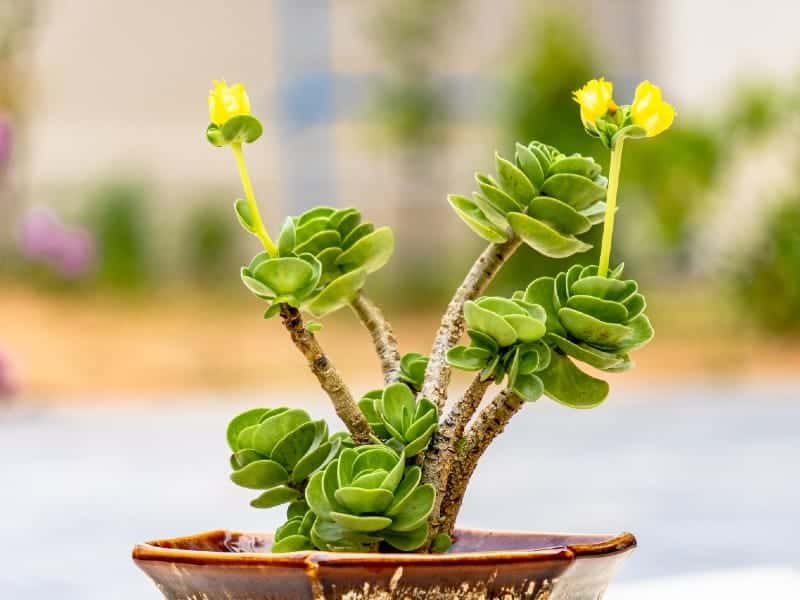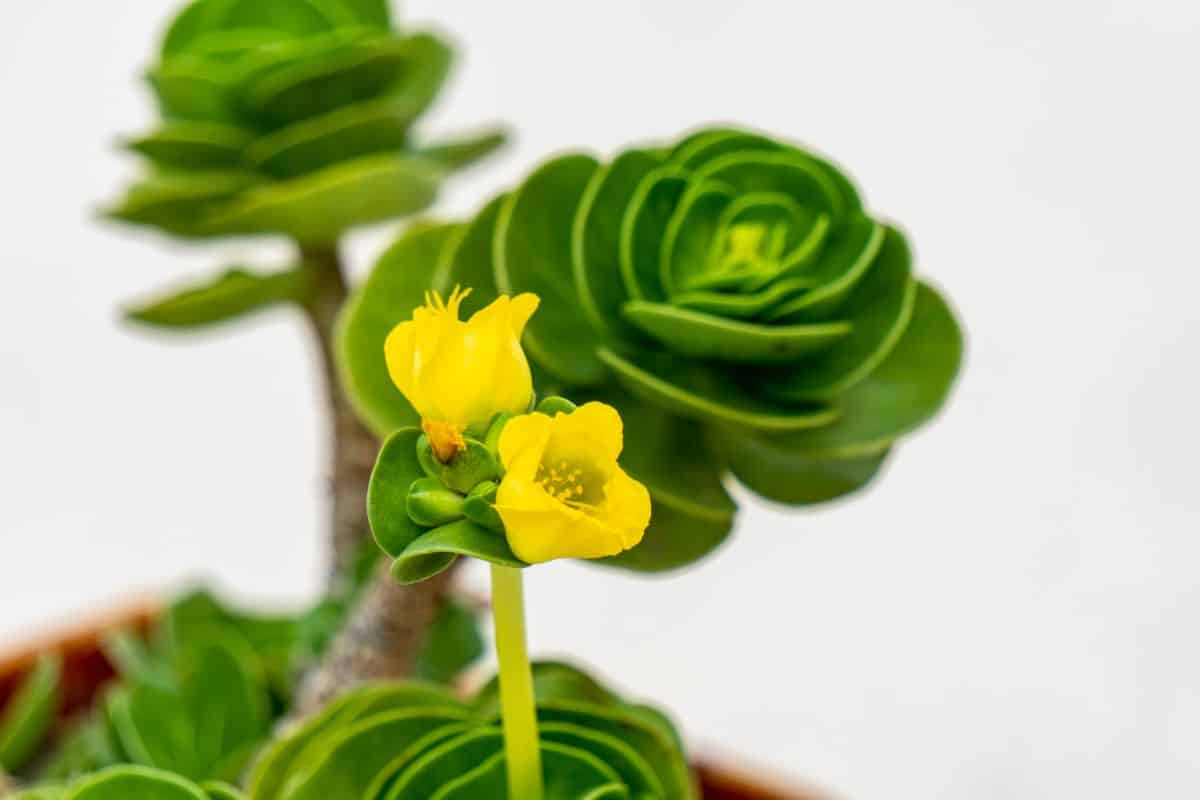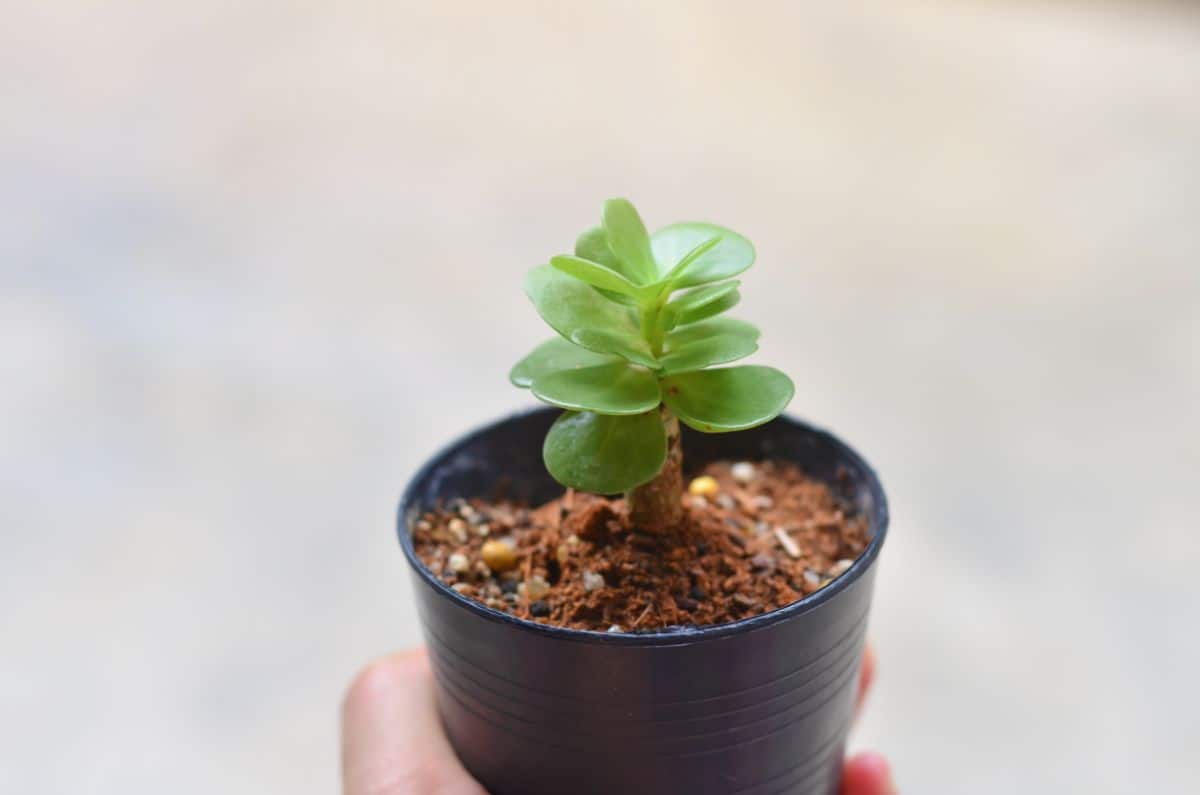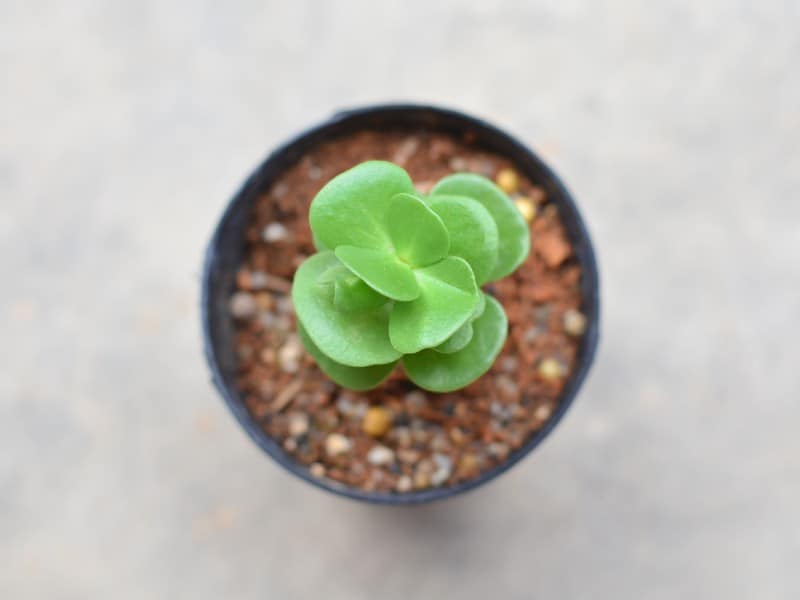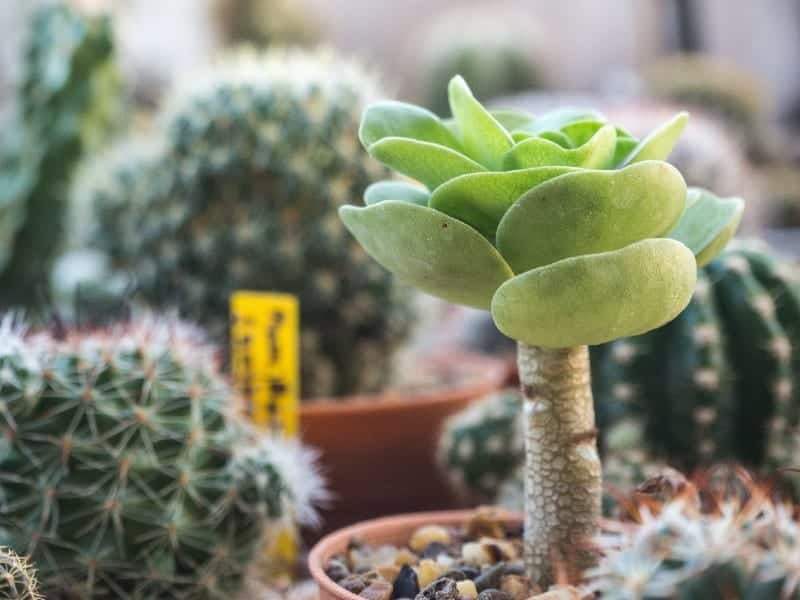The Portulaca Molokiniensis is an unusual-looking succulent. It is native to Hawaii, where it is only found in a few select places along the coastal areas. In the United States, it is on the list of endangered species, because it is so rare.
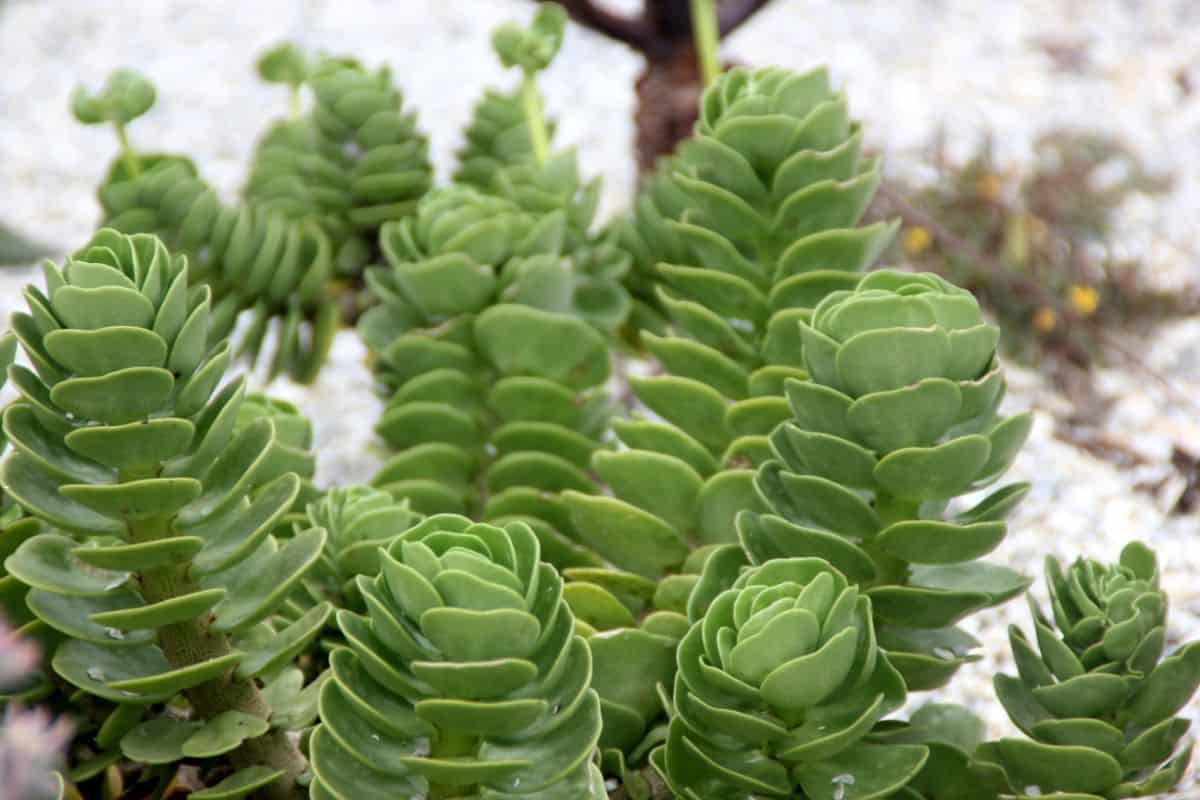
The Portulaca Molokiniensis is also known by its common name in Hawaii, where it has always been called ‘ihi.
Jump to:
- Portulaca Molokiniensis Appearance
- Caring for the Portulaca Molokiniensis
- Portulaca Molokiniensis Ultimate Care Guide
- Portulaca Molokiniensis Ultimate Care Guide
- Temperature
- Soil
- Propagating the Portulaca Molokiniensis
- Propagating from seeds
- Propagating from cuttings
- Common pests and problems with the Portulaca Molokiniensis
- Leaf infections
- Overwatering
Portulaca Molokiniensis Appearance
| Name: | Portulaca Molokiniensis |
| Soil: | Well-aerated soil |
| Blooming: | Spring to late summer |
| Light: | Direct sunlight |
| Water: | When the soil is dry |
| Propagation: | Stem cuttings and seeds. |
The Portulaca Molokiniensis has a different appearance to most other common succulents.This succulent grows easily in the wild, where it self-propagates frequently. The multiple branches and stems clump together to form a dense shrub.
The shrub formation develops as the plant spreads, with branches that grow upwards, very close together. The stems, which are about 1 inch in diameter, grow upright from the base, and form a shrub that reaches a height of about 12 inches.
The leaves commonly grow in straight rows, with up to 4 rows on each stem. They are slightly elongated, with a rounded tip. The leaves are usually about 2 inches long.
Buy it from:
The color of the leaves varies, from a pale shade of green to a much darker green. They often look darker closer to the tips of the branches, where they tend to grow in thicker clusters.
The Portulaca Molokiniensis has a tendency to seed itself, and spreads very quickly when planted in beds outdoors. It is necessary to keep an eye on it and trim it back frequently, to prevent it from taking over the entire space around it.
The Portulaca Molokiniensis is a highly suitable succulent to cultivate in pots as an indoor plant, where it will remain small if contained in a pot. When kept indoors in a pot, its growth will not be stunted, and it will continue to grow easily, but it will grow upwards and become much taller, rather than spreading outwards.
The plant produces a strange stem that extends beyond the leaves for a few inches. This stem is long and straight, and very sturdy. A pretty little flower develops at the tip of this stem. The flowers are small and cup-shaped, in varying shades of yellow.
Caring for the Portulaca Molokiniensis
The Portulaca Molokiniensis is a tough little plant that does not require much attention from you. It is easy to maintain, and will thrive as long as it is kept in the right conditions. There is not too much that can go wrong when cultivating this succulent.
Portulaca Molokiniensis Ultimate Care Guide
No products found.
The Portulaca Molokiniensis needs a lot of direct sunlight in order to grow well. If you are planting it outdoors, choose a sunny spot that gets at least 6 hours of direct sunlight per day. If it has even more light, it will also be fine. Being native to hot areas of Hawaii, this succulent is used to strong sunlight.
If you are cultivating your Portulaca Molokiniensis in a pot, as an indoor plant, select a room that is south-facing (if you are in the northern hemisphere), where it will do very well on a window sill. This will ensure that your succulent gets enough sunlight.
If you do not have a room that gets sufficient sunlight, it is still possible to keep your Portulaca Molokiniensis indoors, with the help of a grow light, which you will find at your local garden center or nursery.
All plants need light in order to produce chlorophyll, through the process of photosynthesis.A grow light is an electric light that is designed specifically for cultivating indoor plants. It mimics natural sunlight, enabling photosynthesis to take place. In this way, the plant can still get the nourishment that it needs in order to flourish.
Portulaca Molokiniensis Ultimate Care Guide
The Portulaca Molokiniensis is native to hot, arid areas, where it gets very little natural water. Therefore it does not need much water.
The leaves of this succulent have a wide, absorbent surface, and as such they are able to retain moisture for an extended period. The plant does not need to be watered often. Once a week to ten days should be sufficient.
When watering, it is not necessary to soak the plant deeply. A light sprinkle of water to wet the foliage is usually sufficient to keep the plant healthy.
Ensure that the container has good drainage holes at the bottom, to enable excess water to run off freely. If the roots are left to sit in wet soil, they will rot and the plant will die.
Temperature
The Portulaca Molokiniensis is used to very hot weather conditions. It loves sunlight and warmth, and will be very happy in hot conditions that are similar to its native Hawaii.
This succulent is not cold hardy, and will not be able to tolerate extremely cold temperatures. If you live in a zone with a mild climate, it can be planted directly into your beds outdoors.
However, if you are in an area that has very cold winters, it is recommended that you plant your Portulaca Molokiniensis in pots or containers that can be taken indoors when the cold weather sets in. It will not survive temperatures below 25° Fahrenheit.
Frost can be extremely harmful to the Portulaca Molokiniensis. The ice crystals cause the cells of the leaves to swell and freeze, effectively killing the leaves. If frost is expected, it is essential to move your succulent undercover overnight. It can also be covered with a light cloth or fabric to shelter it from the frost.
Soil
When planting the Portulaca Molokiniensis, the most important aspect to consider when it comes to soil, is the drainage. It is essential that the soil should have good drainage, in order to prevent root rot from setting in.
If your succulent is in a pot, make sure that there are good drainage holes at the bottom, in order that any excess water can run off freely.
The soil in which your Portulaca Molokiniensis is planted needs to be well-aerated, to allow for adequate drainage. It should therefore be made up of a mixture of cactus potting soil and mineral grit, in a ratio of 1:1.
Mineral grit is a substance that is added to the soil, to help water drain away. It can be any one of the following elements, or a combination of all of them.
- Coarse sand
Coarse sand is sand that has thicker, heavier granules, with more space between the individual granules. This allows water to run through the sand, rather than causing the sand to thicken and stick together in clumps.
- Pumice
Pumice is a type of stone that is filled with natural gas. The gas bubbles in the stone aerate the stone particles, allowing water to drain off easily. When mixed with cactus potting soil, pumice is an excellent way to ensure good drainage.
- Perlite
Perlite is a substance consisting of volcanic minerals that are high in natural water content. The large particles facilitate drainage, allowing excess water to run off easily.
Propagating the Portulaca Molokiniensis
The Portulaca Molokiniensis is extremely easy to propagate. It can be cultivated from seeds,or it can be propagated from a stem cutting.
Propagating from seeds
The Portulaca Molokiniensis sheds seeds that self-propagate, and the seeds can also be collected and used to start a new plant.
To propagate from seeds, the seeds should be left to dry for a few days. They should then be sprinkled on the surface of the soil, in a new container, and dampened with a light sprinkling of water.
After a few days little shoots should begin to emerge from the seeds, and a new plant will start to take root. Water lightly every few days, until you have a viable plant growing. Then continue to follow the watering guidelines set out above.
Propagating from cuttings
The Portulaca Molokiniensis will grow quite easily when propagated from a stem cutting. Always use a clean, sharp knife or scissors to cut the stem, in order to ensure successful propagation.
If the utensil is dirty, microorganisms such as bacteria can get into the cut surface, infecting the plant. It will then not be able to grow.
If the utensil is not sharp enough, you may have to hack repeatedly at the stem in order to remove a piece. This will cause damage to the surface, and it may not grow when planted.
Cut a piece as close to the base as possible. Leave it to dry for a few days, so that a callus can form on the end. Then insert the callused cutting into a pot that has been correctly prepared with soil, as described above.
Water lightly every few days, until the new plant takes root and starts to grow. You will soon have a healthy new Portulaca Molokiniensis succulent that should thrive and flourish.
Common pests and problems with the Portulaca Molokiniensis
The most common problems with the Portulaca Molokiniensis are moldy leaf infections, and overwatering.
Leaf infections
The Portulaca Molokiniensis tends to be prone to a leaf infection that is known as white rust. This is a white, powdery coating that develops on the leaves, and it can spread very quickly if not contained in time.
The best natural treatment for white rust is to spray with a mixture of apple cider vinegar, diluted 1:1 with water. Repeat the spraying every few days, until the white coating disappears.
Overwatering
Many gardeners have a tendency to give their plants too much water, believing that water is good for plants. Of course, water is essential for healthy plant growth, however, too much water can be as harmful to your succulents as insufficient water.
If your succulent gets more water than it needs, it will not be able to absorb the excess water. The roots will then be left sitting in constantly damp soil, and they will start to rot.
Once root rot has set in, it is difficult to treat and eliminate. The roots will not be able to support and nourish the plant, and your succulent will eventually die.
If you follow the watering guidelines as set out above, this should prevent overwatering, and your plant’s roots will remain strong and healthy.


